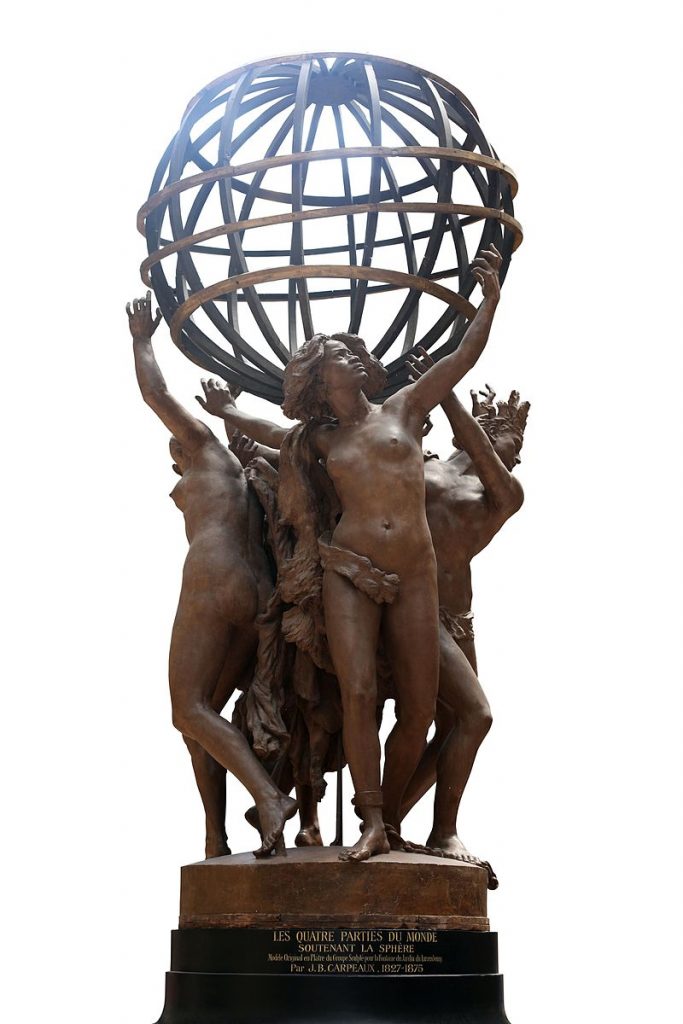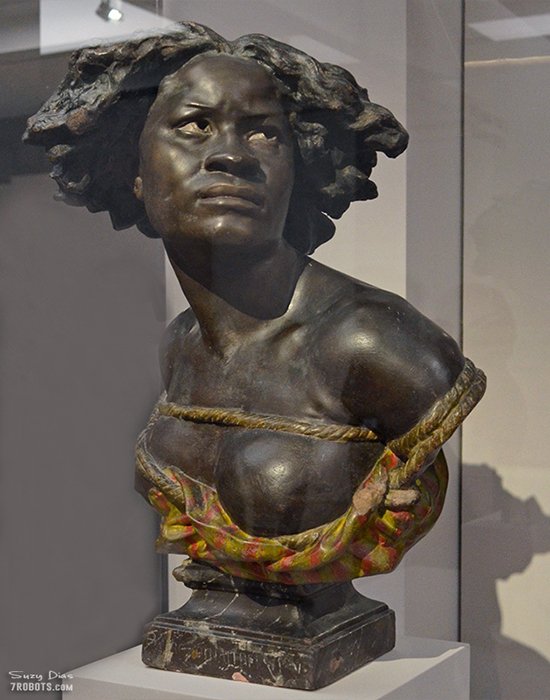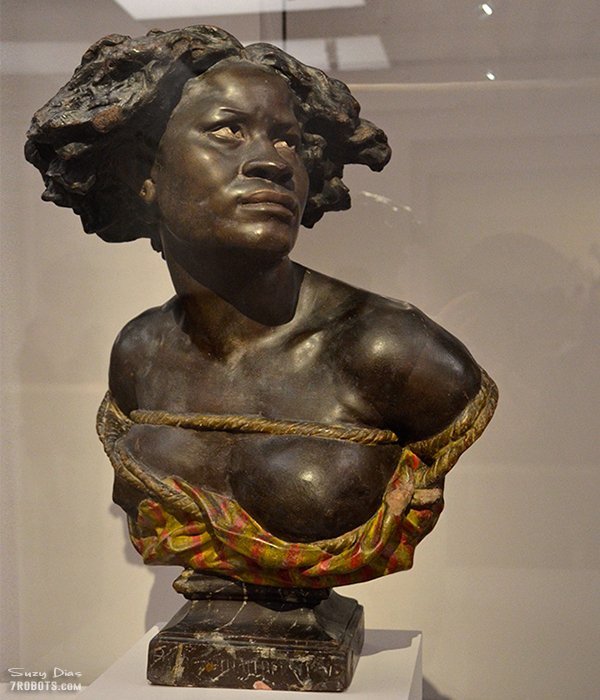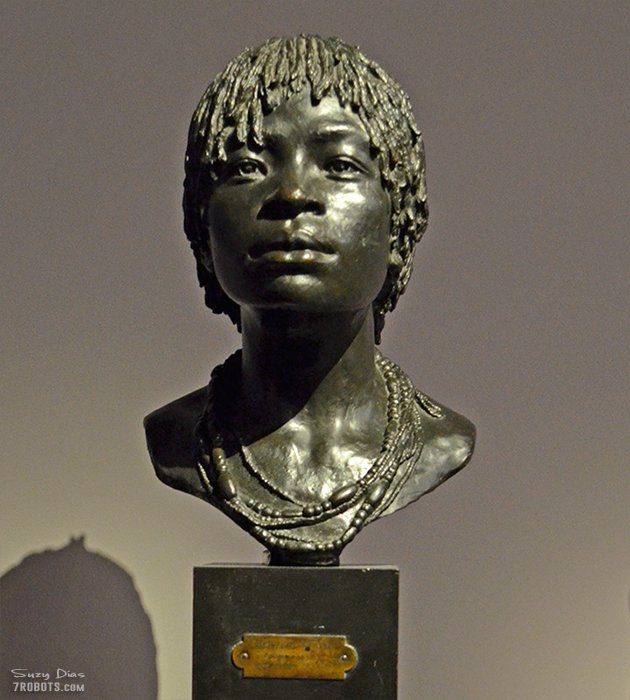Jean-Baptiste Carpeaux
“Jean-Baptiste Carpeaux, (born May 11, 1827, Valenciennes, France—died Oct. 12, 1875, Courbevoie), the leading French sculptor of his time. His works, containing a lively realism, rhythm, and variety that were in opposition to contemporary French academic sculpture, form a prelude to the art of Auguste Rodin, who revered him…
His most famous work, The Dance (completed 1869), a sculptural group for the facade of the Paris Opéra, created a sensation and was attacked as immoral. His works were the subject of some of the most significant debates about sculpture during the mid-19th century. In order to allay the huge costs of his monumental projects he produced reductions and variants of them and many celebrated portraits that earned considerable sums of money and made his work widely available to private buyers, both the wealthy and those of modest means.” [read more…]
Pourquoi! Naître esclave! or Why born a slave! (1875)
“The bust follows Carpeaux’s model of a young woman of African descent, one of the figures representing the four parts of the world that support the globe of the Fountain of the Observatory in Paris, commissioned in 1867 and inaugurated in 1874. For the commercial edition of the bust, Carpeaux added the inscription: Pourquoi! Naître esclave! (Why born a slave!).” [read more…]

Herbert Ward
“Born in London in 1863, Herbert Ward left home at the age of 15 and began his world travels first to New Zealand and Australia, later to Borneo. In 1884 at the age of 21 he set out for the Congo…
In 1893 Ward began formal studies in painting and sculpture in London and in Paris. In 1902 Ward moved permanently to Paris. He found that Paris provided him with an easier access to African and Caribbean models for his sculptures; the French had excellent foundries for bronze casting; and he enjoyed a greater acceptance of his Congolese subjects by the French art academy and the public.” [read more…]
Femme d’Afrique centrale (c. 1902)
Related Posts:
• The Black Model / Le Modèle Noir Exhibition in Paris
• Alexandre Dumas and Le Trois Dumas: Three Generations of Greatness
• Charles Cordier and the Beauty of Black and Brown
Related Links:
• Jean-Baptiste Carpeaux (1827–1875)



